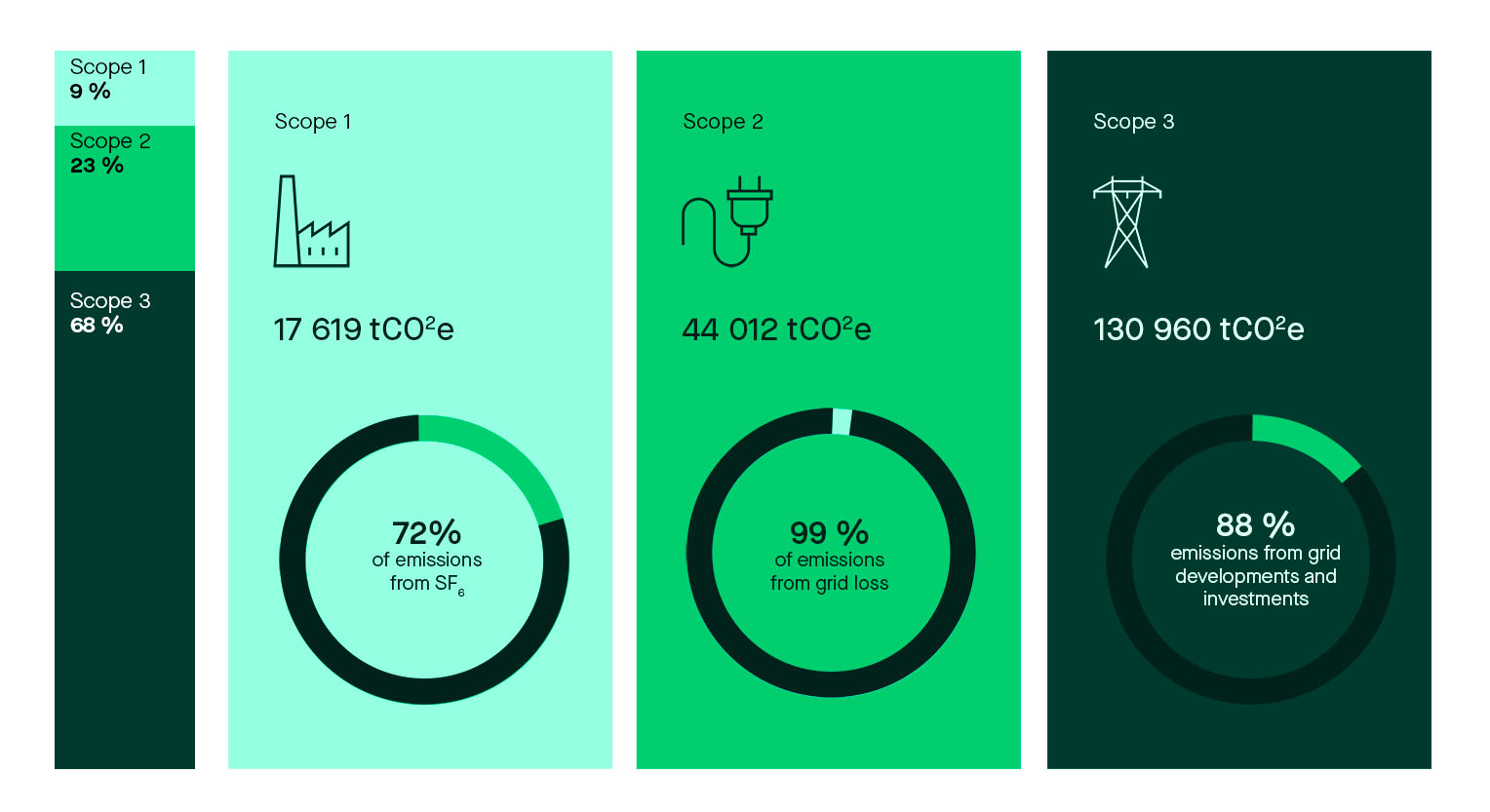Our greenhouse gas emissions

2024 in numbers:
- 26 percent reduction in total greenhouse gas emissions compared to 2023, mainly due to fewer newly energized grid facilities. We expect an increase in newly energized grid facilities in the coming years.
We will:
- Develop a transition plan with science-based climate targets in line with the 1.5-degree goal.
What are our sources of greenhouse gas emissions?
SF6 leaks from Statnett's gas-insulated facilities are the largest source of emissions in the direct emissions category (Scope 1). SF6 is a greenhouse gas 23,500 times more potent than CO2.
In the indirect emissions category for purchased electricity (Scope 2), grid losses account for most of the emissions. Because materials and energy are required to produce electricity, and some of the electricity in the Norwegian grid comes from fossil sources in Europe, grid losses are indirectly a source of greenhouse gas emissions.
Indirect emissions related to input factors (Scope 3) are Statnett's largest source of greenhouse gas emissions. Power lines, pylons, materials and equipment for stations constitute the largest emission products within this category.
How are we working to reduce emissions?
Statnett has sent a commitment letter to the Science Based Targets initiative about our intention to set science-based climate targets. To cut emissions, we will, among other things:
- Reduce both leaks and use of SF6, with a goal of Statnett's facilities being completely SF6-free by 2050. Statnett will adopt alternative technology with significantly reduced climate impact.
- Set climate requirements in procurements of products with high greenhouse gas emissions.
- In 2024, we have implemented CO2 pricing for building and construction contracts, where we reward bidders with low greenhouse gas emissions.
- Implement measures to reduce emissions from our own vessels and vehicles, including assessment of low-emission technologies.

